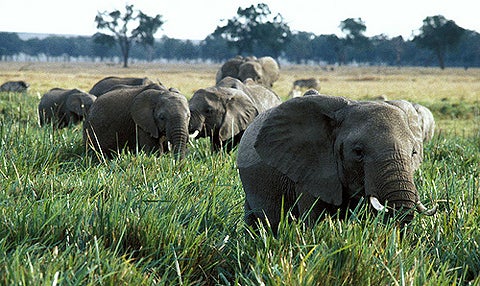
Sometimes, international convention meetings can be heart-breakingly slow-moving. The Convention on Biological Diversity (CBD) – one of the three conventions born after Rio in 1992 to drive sustainable development – which has been meeting in Hyderabad in India this week, is no exception. I’ve seen tough negotiators from all corners of the Earth emerge from conference rooms wearing pained expressions.
It’s outside the negotiating rooms – where the major topic of the moment is how to mobilize the financial resources needed to meet the CBD’s ambitious Aichi Targets – where things are a lot brighter.
We held a packed out panel discussion today to showcase some of the excellent examples of how countries, NGOs, and the private sector are coming up with innovative approaches to financing effective nature conservation. We also launched two WBG publications that highlight successes and lessons learned from our experience of conserving biodiversity in Africa and the Latin America and Caribbean region.
Rosa Lemos, the head of Brazil’s conservation trust fund FUNBIO, one of the largest in the world, described how the organization has mobilized hundreds of millions of dollars for protected area management by drawing from a range of sources, including environmental compensation funds. These payments are required of extractive industries under Brazilian law additional to their on-site mitigation efforts. Through FUNBIO, these funds grow, providing the government with long-term budget support for its conservation efforts.
Gerard Bos from IUCN's Business and Biodiversity initiative talked about approaches by the Sustainable Cement Initiative and how IUCN is building on these to spread the idea of “net positive impact” across all industries that have the potential to adversely impact biodiversity. We look forward to working with IUCN to explore aggregate offsets.
Andrew Deutz of TNC made the point that nature can be a cost-effective solutions provider when you get the alignment right. For example, TNC is facilitating payments from water utilities for upper watershed management that – in addition to providing conservation benefits – reduce the operating costs for those same water utilities.
Jonathan Davis from Liberia’s Environmental Protection Agency highlighted the reality on the ground for countries strapped for cash and desperate for solutions. He drew inspiration from Brazil’s FUNBIO example and walked away with optimism that we hope he will bring back to the negotiating table.
Our message throughout the corridors and in conference rooms all week is that these solutions exist. But the enabling environment matters if we’re going to achieve the Aichi Targets. We have to move beyond the boom-and-bust cycle of project financing. We have to sustain results where we achieve them, and we have to connect financing to national biodiversity strategies.
At the World Bank Group, we’re doing exactly this. As a first step, through our WAVES program, the Bank Group is stepping up its support to countries to factor natural capital into economic decision-making. Nature needs to be firmly on the agendas of finance ministers and reported on in board rooms. We need strong public-private partnerships that are investing in natural wealth for the long-term.
With huge challenges come opportunities. We look forward to applying our capital, convening services, and technical assistance to rev the biodiversity engine of inclusive green growth.
Rachel Kyte
Vice President for Sustainable Development
www.worldbank.org/sustainabledevelopment
Twitter: @rkyte365


Join the Conversation